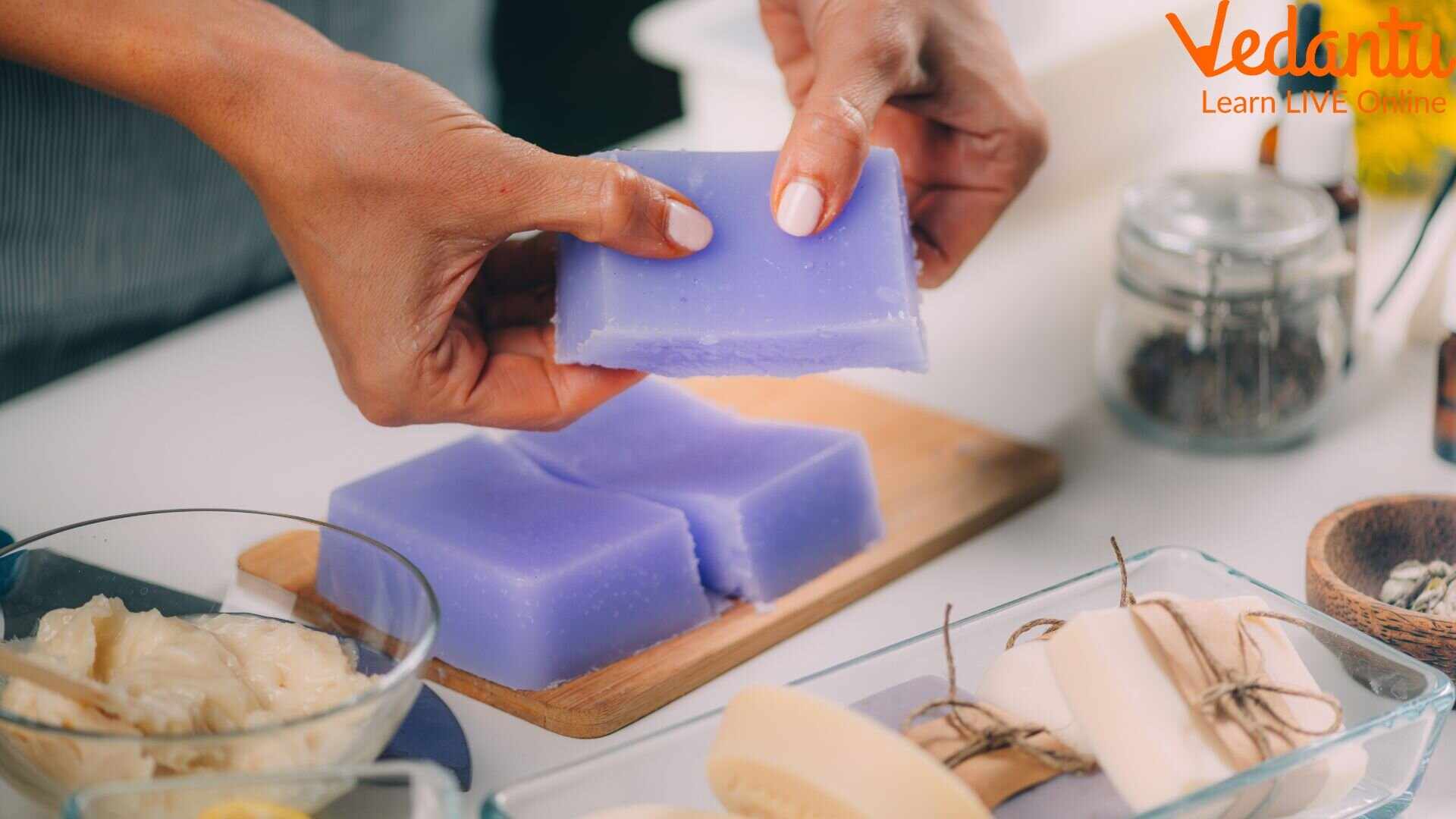How To Make Soap From Scratch At Home
Introduction
Soap is probably the most beneficial invention of all time. It has literally transformed the way we have maintained our hygiene. We find soaps for washing dishes, clothes and bathing available in the market. You can also learn how to make soap at home using the same scientific principles.
Developing a soap formula is easy. All you need to do is to follow the list of steps mentioned in this article. Before learning how to make soap at home, let us find out what soap is and how it works.
What is Soap?
Soap is a hard chemical substance developed using a chemical process called saponification. It is a chemical reaction where sodium hydroxide (NaOH), an alkali, is reacted with fatty acids present in vegetable oils or animal fats or both. In some cases, potassium hydroxide (KOH) is also used.
We use soaps to clean things. Soaps are used to bathe or clean our hands. It is also used to clean dishes and wash clothes. A soap formula varies depending on its use. For instance, soap used for washing clothes or cleaning dishes cannot be used for bathing. The scientific principle of soaps remains the same though.
The Scientific Explanation of the Cleansing Action of Soaps
If we look closely then we will find out that dirt is generally oil-based. It is hard to remove dirt with only water. Soaps are used to create micelles in an aqueous solution. These microstructures are created from the sodium or potassium salts of fatty acids of vegetable oils or animal fat.
These micelles have hydrophilic (polar) and hydrophobic (non-polar) ends. They create an emulsion in an aqueous solution where the non-polar ends trap the oily dirt inside them forming small spheres. The other polar ends remain attached to water molecules. Hence, the cores of these microspheres contain dirt removed from the surfaces washed. The soap manufacturing process used in industries follows the same scientific principle of saponification.

Homemade Soap DIY Steps
Steps to Make Soap at Home
Check the list of soap making ingredients you will need.
A soft plastic container or a silicone mould
Petroleum jelly or vegetable cooking spray
Glycerine soap base (you can find them sold in the form of blocks)
A measuring cup fit to use in a microwave oven
Soap dyes you want to colour your homemade soap with
A popsicle stick or a chopstick
Essential oils
Here is the list of steps of soap making you can follow. In these steps, we will discuss making a bathing soap from scratch.
Step 1: Use the petroleum jelly or vegetable cooking spray to cover the inner surface of the plastic container or the silicone mould you want to use. Wipe the excess using a paper napkin and ensure a smooth application.
Step 2: Cut and break down the glycerine blocks into small pieces. This is the first step of soap making process where you will create a soap base. Cutting down the blocks into pieces will help you melt them easily.
Step 3: Put the small chunks of glycerine in the measuring cup and put it in the microwave. You will need only 30 seconds of microwaving to melt it down. If you find that some chunks are still left to melt, do the same process for another 10 seconds. Remember not to boil glycerine as it will degrade at high temperatures.
Step 4: use mittens to remove the container from the oven. Make sure you have taken precautions as it will be hot.
Step 5: Use the soap dye to give colours to your homemade soap. You can do experiments with the colour of your soap. Make sure you add only a few drops. Too much dye will make the soap dark. Use a chopstick or a popsicle stick to mix the colour evenly in the hot liquid glycerine.
If you want to make all-natural soap, you can use turmeric or beetroot juice for natural colours instead of soap dyes.
Step 6: to give your soap the right fragrance, add essential oils. A few drops will do. Don’t add too much as it will make the soap’s fragrance too strong. Adding one or two essential oils in measured amounts will give your soap the right fragrance and antibacterial properties. Use only those essential oils for soap making generally preferred by the manufacturing industry.
Step 7: Gently pour the soap formula on the mould or the plastic container you are using. Do not overflow. You can also add a solid object on the top to give it a decorative pattern.
Step 8: Let the solution cool down for at least 30 minutes. The hardening time of soap formulas is about 2 hours.
Step 9: When it has hardened to the desirable extent, cut the plastic container to get the whole chunk intact. A silicone mould can be twisted to get the soap out. Make sure the solution has hardened well as it might get distorted during extraction.
This is how to make soap at home. Isn’t it simple? Once you master the art, you can make soaps from any silicone mould for different purposes. Enjoy experimenting with the soap colours and get remarkable results.
Soap Preparation is Easy
The preparation of soap at the industrial level is similar to what we have discussed today. It is done at a very large volume in the industries but the scientific principles and manufacturing techniques are all the same at the basic level.
Make sure you have acquired all the soap chemical ingredients beforehand to ensure a continuous process. Do not keep the essential oil containers open as they will evaporate. Give ample time to harden the soap solution before you take it out from the container.







